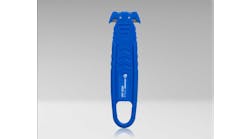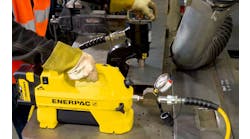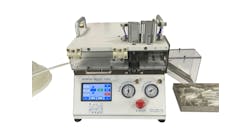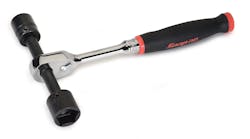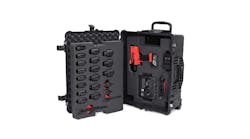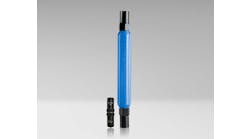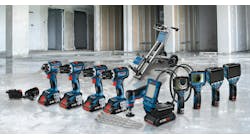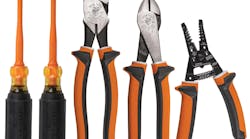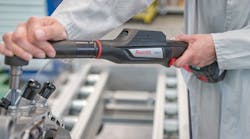We see a lot of people touting the next big thing in ERPs to reduce wasted resources, or how a fancy new algorithm facilitates a double-digit drop in inefficiencies. Consultants and developers preach “paradigm shifts” and “digital transformations,” but what does any of that actually mean?
The problem, besides the aggressively aloof Big Tech jargon, is that most of these digital tools are incredibly esoteric, even alien at times. If something has more horsepower than the competition, you get that it’s powerful. If something is IP69-rated, you know it’s pretty tough. But software is a different matter. One manufacturer saving $1 million because they made the switch to the cloud-enabled MES version of Geico doesn’t prove you will.
Every so often, though, a manufacturer finds a way to bridge the divide between hardware and software, between upper-level ambitions and factory floor common sense. That’s what tool and equipment manufacturer Ingersoll Rand has achieved with the QX Series Cordless Precision Fastening System, which the company says “will carry the industry into the future.”
And like the ergonomic handles on these screwdrivers and angle wrenches, the way they do this is fairly easy to grasp.
These smart tools measure, store, and monitor the amount of torque applied to fasteners on the assembly line in high precision assembly processes. They have eight configurable tightening settings, programmable from a USB or on the keyboard on the back of the device. The screen above those controls indicates the measured torque or angle.
A closed-loop transducer integrated into the tool acts as a string gauge measuring physical data such as torsional load and peak torque, sending this data, along with more than 20 other bits of data (including tool ID info) to a process communication module. This hub is connected to plant’s Ethernet network, and can communicate back and forth with your MES or archival server.
“It certainly has a lot of technical capabilities, but we believe these tools should be simple enough that an expert isn’t required,” says Jeff Lowe, the company’s global product manager, who adds that you can have it out of the box and operational by a first-time user in less than 10 minutes.
The tools send data across a variation of low-power Zigbee in short bursts, so the 20V lithium-Ion battery expends its energy on work, not telling all your business to some other machine. It still shares that data, which includes simple stuff such as time, date, and serial number all the way to details like high and low torque limits, and how many times the spindle turns.
That last one comes into play for process control, Lowe says.
“That’s for if you’re trying catch duplicate attempts at a single fastener,” he explains. “It detects a stripped fastener if it turns too many times.”
He adds that too much torque too soon would indicate a cross-thread.
“All the data that gets created cannot only be used to monitor the accuracy of the tool, but the productivity, how many cycles users are doing in a minute, and how many failures they’re having,” Lowe says.
“Sometimes they are releasing the trigger before the tool stops, which is an indication that the operator needs more training, because they’re trying to jump the gun—literally.”
Precision fastening is used for high accuracy applications in heavy equipment, light manufacturing, automotive, and aerospace applications.
In the case of aerospace, where those screws may be holding together engines or wings 10,000 feet in the air, every fastener is absolutely critical.
“We’re talking about life-affecting failures,” Lowe says. “If there’s a failure of a fastener, there could be catastrophic consequences.”
If something did go wrong on an airplane, Lowe says the data derived from the assembly line, conclusively showing the correct torque values, could exonerate a manufacturer.
“It not only protects yourself, but [investigators could] also do a deep dive on the whys, and how we can improve for the future,” Lowe says.
With around two dozen different data points, the user could come up with their own ways to leverage the new information, such as tracking individual users’ speed and efficiency to improve throughput or for gamification purposes.
“We probably don’t even know the right way—or the best way—to use them yet,” says Lowe.
That’s because the “right way” to use your data isn’t dictated by a tool manufacturer or Silicon Valley startup, but discovered within the confines of your plant.

